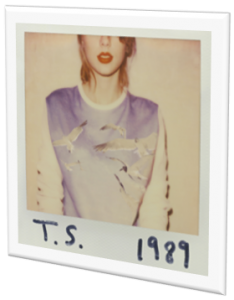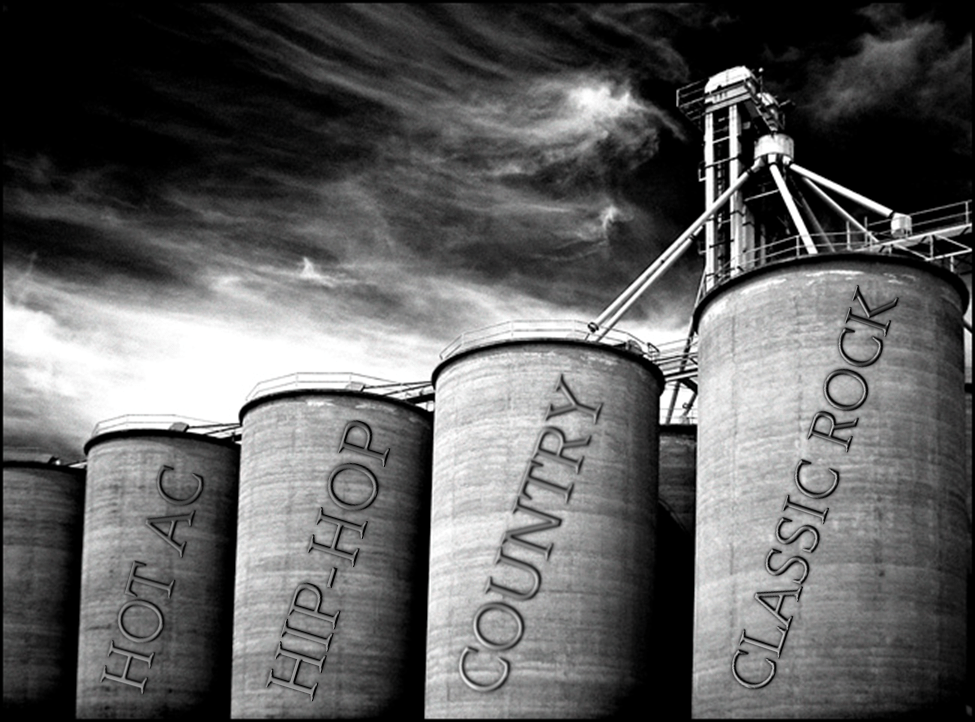You may have read about the big news out of Country radio that Taylor Swift’s new pop song, “Shake It Off,” is virtually formata non grata. Most programmers simply avoided it because it doesn’t fit the Country format. And the release of the entire album, 1989, is an obvious step by Swift to mine mass appeal contemporary pop real estate. While most Country programmers say they hold nothing against Taylor (who has been an amazing ambassador to many stations, their PDs, and their families), many hope that a true Country album is in her future.
Throughout the history of radio formats, these “test cases” have come up, forcing programmers to make tough decisions about what fits the format and what doesn’t. It’s always been a balancing act, trying to satisfy a more parochial core audience that urges the station to stay true to a sound, with the temptation of adding a mass appeal breakout hit like Swift’s.
In my world of Rock, Michael Jackson’s “Beat It” comes to mind. The analogy is far from perfect because Swift is a tried-and-true Country artist with a Pop song. In the case of “Beat It,” Jackson had never been played in Rock, but the song was being marketed as “Rock,” largely on the back of Eddie Van Halen who played the great solo guitar bridge.
To play “Beat It” – or not – divided the format and its programmers in a debate that raged for months. The fact that the song has never really been played in Rock during these past few decades seems to be a pretty good indicator that marketing “Beat It” as a “Rock” song probably didn’t hold water and never really resonated with the audience of those days.
 In fact, listeners took sides, punctuated by the anti-Disco movement, which in retrospect was very much about Rock defending its hill against what a bunch of morning guys like Steve Dahl and many others marketed as cheesy, polyester music. The audience even bought into this musical culture war, which in today’s light just seems archaic and very dated. This was long before Kid Rock crossed over to Country or Aerosmith rerecorded “Walk This Way” with Run DMC.
In fact, listeners took sides, punctuated by the anti-Disco movement, which in retrospect was very much about Rock defending its hill against what a bunch of morning guys like Steve Dahl and many others marketed as cheesy, polyester music. The audience even bought into this musical culture war, which in today’s light just seems archaic and very dated. This was long before Kid Rock crossed over to Country or Aerosmith rerecorded “Walk This Way” with Run DMC.
But that was a different world. Radio was a medium made up of rather discreet, modal format silos. A look at the charts affirms the simplicity, clarity, and convenience of having well-defined lanes. For both radio and record industries, clear format dividing lines has helped create a common dialogue.
And most radio research studies to this day have a goal to outline and refine these musical foul lines, especially in the post-consolidation days where it’s not unusual for a cluster to contain multiple stations in the Rock or AC/CHR format families.
But new technology has signaled that musical tastes have become more eclectic, thanks in large parts to digital music and playlist creation. Today, you’re hard pressed to find an iPod or a Spotify account loaded with just one or even two genres. We all have our guilty pleasures, no matter what our favorite artists or bands truly are.
In fact, if you ask most people what kind of music they’re “into,” chances are they’ll respond with “Oh, I like a lot of different kinds of music. My tastes are very eclectic.” Recording stars and the companies that sign them seem to be embracing this changing landscape, too. Motley Crue’s gravitation to Country and Tony Bennett’s pairing with Lada Gaga suggest that the music industry is testing those traditional boundaries.
And so formats lines are gradually blurring, encouraged by the long tail effect that has served to broaden tastes, and by music test and M Scores that indicate those silos may not be as rigid as they once were.
In fact, many formats are getting harder and harder to differentiate as sounds, songs, and artists blend together.
This may be happening to Generation Z and Millennials faster than other groups. Their tastes can wander all over the map, from Oldies and Classic Rock to Funk and R&B. You’re are hard-pressed to find other generations that not only enjoyed their parents’ music, but also knew it very well.
And in the process, it seems clear that a little surprise now and then on the radio can make a difference. And a BIG surprise? It can make or break careers and stations.
Consider Miley Cyrus. As The New York Times reported over the weekend, her twerking incident – widely criticized, vilified, and mocked one year ago has catapulted her career. She is perceived as outrageous, bold, and maybe a little crazy. But those are the same qualities that worked for KISS, Howard Stern, and Dennis Rodman over these past few decades.
People like to be outraged, shocked, and surprised – especially if there’s an element of humor, fun, and a repudiation of convention. Or silos.
WXPN in Philadelphia may have proved that point in the last several days. Their greatest 885 songs is a nice programming hook in much the same that A-to-Z performs on Classic Rock stations.
But it was their “88 Worst Songs” that truly captivated their audience. It has the elements of quirkiness, surprise, and even outrage. And by the way, it actually became the #1 trending topic on Twitter in the entire U.S.A. over the weekend. (Note that “We Built This City” was trending, too, because it earned the ranking of “the worst song” in XPN’s stunt.)
U.S.A. over the weekend. (Note that “We Built This City” was trending, too, because it earned the ranking of “the worst song” in XPN’s stunt.)
Think about it: playing songs that are out of the format, that don’t fit, and that don’t test.
Surprise, shock, kitsch – in an environment where we have every song available to us whenever we want on whatever device. And yet, it’s radio’s ability to unleash that curveball (or maybe a change-up) as the device that grabs attention and the spotlight – even for a traditional broadcast station.
And that brings us back to Taylor Swift, because she’s a true star – whether that means a Country star, a Pop star, or whatever it is she now wants to be. And it begs the question about whether Country listeners are just fans of Country music or are they also fans of Taylor Swift?
And it also makes you wonder what would happen if a Country station started playing a song or two from 1989 and made an audience conversation about format fit, the power of celebrity, and breaking down the rules. These are the kinds of moments that only a radio station call pull, and something you won’t hear on Pandora, Spotify, or your iPod.
Like getting ratings.
P.S. I was programming WRIF when “Beat It” was released. We never played it.
- What To Do If Your Radio Station Goes Through A Midlife Crisis - April 25, 2025
- A 2020 Lesson?It Could All Be Gone In A Flash - April 24, 2025
- How AI Can Give Radio Personalities More…PERSONALITY - April 23, 2025





The decision to not air Taylor Swift’s song on country stations brings up an interesting dilemma.
Over the years, programmers have tried to mass market formats like country by playing cross over songs and taking an a/c approach to the presentation of the format.
In many instances, there have been moves such as removing the word country or oldies from any number of stations. Whether this makes a difference or not depends on the market in my opinion.
For example, when WHN existed and played country for 14 years, they took the word country out and made the station’s sound oriented specifically to New York.
New York is not a country market but that’s a different topic.
As pointed out in another newsletter about the business, hot A/C and CHR are sounding very similar both in what’s being played and how the music is presented on the air throughout the country.
As far as Beat It goes, in 1983, WPLJ changed from AOR to CHR but they tried to keep the rock audience while heading in a top 40 direction.
As pointed out by the PD at the time, they played Beat It but I think that turned off there core audience who had been listening to them since the 70s.
My point is that deciding to not air Taylor Swift’s record puts those in charge in a bind as far as what is considered country and what is not.
It will be interesting to see how Nash the national brand Cumulus is marketing for country handles this on their stations.
Larry, thanks for the NYC perspective and the interesting offshoot about how Cumulus is actively fragmenting Country. Artists like Reba McEntire fall through the cracks. There are a lot of artists like this who simply defy categorization, and yet have fans and music that is worthy of being played. Appreciate you taking time to comment.
This is a fascinating topic. There were other songs that were tougher choices for rock stations than Beat It – OMD, THe Cure, The Motels Tommy Tutone and The Human League come to mind. And more recently, THe Dixie Chicks were an issue when they released an album that was not at all country, had political headwinds to deal with on top of that and some company edicts that forbade their airplay.
At the end, some borderline material has been played as currents over the years on rock stations, but little if any of it ever makes it to the library. And over the years, country stations that tried to camo their format (remember “Great American Music” haven’t done as well as those who proclam it proudly.
Millennials are surely less format focused than their parents are, but I still think when a 20 year old tunes in a classic rock station, they expect to hear classic rock – all the time. And when they dial in to a country station they want to hear all country as long as they’re there.
As for Taylor Swift – if I was a country station I’d play her old titles that tested and not play the new uncountry stuff – unless it tested. But I’d be all over social media soliciting opinions on it – what a perfect Twitter topic!
I think that programmers (and I include myself in that group) are a lot more parochial than fans. And your last point, I believe, is the key. Whether you or I or the Country brain trust is right…or wrong…the topic is a fun one that will stir up emotions, thoughts, opinions, and ratings. Thanks, Bob.
Remembering the same battle with Aerosmith /Run D.M.C.
Took me a while to except a “collaboration” with Rock & Rap
Hard to except Eddie VH back then doing that ….but I was like HEYYYY
IT’s Eddie Van Halen. KID ROCK said it best …..
“If it looks good, you’ll see it. If it sounds good, you’ll hear it. If its marketed right, you’ll buy it. But… If its real… you’ll feel it.
Kid Rock
And of course, Kid Rock is right. It’s challenging when that “new new” thing comes along, whether it’s “Bohemian Rhapsody” or “Smells Like Teen Spirit” (both of which WRIF struggled with, but of course ended up playing – a LOT). Thanks for checking in with that perspective, SS.
Great column and something we deal with everyday in country radio. You have to remember that since her 2nd album, Taylor Swift had been somewhat polorizing with traditional country music fans – who still give us the most listening.
It is in Taylor’s – and almost every other artist’s best interest – to cross genres. They sell more downloads and concert tix … But is it in OUR best interest? Does Target benefit from being more like Walmart? Would Dunkin Donuts (east coaster) benefit from being more like Starbucks? Honda more like Toyota?
What makes us unique is what builds a solid fan base. PPM has already shown us that people move between stations like shoppers move between restaurants at a food court. If Sbarro adds lemon chicken … I would not need to go to Panda Express … or would I skip Sbarro when Panda adds pizza? Either way, the food court loses it’s specialness.
I was living in St Louis in the 80’s and KSHE was playing “Stuck With You” by Huey Lewis – just like KWK, KHTR and KYKY. I liked the song … but hated KSHE for playing it. I didn’t hit that button to hear Huey Lewis. I hit that button when I got tired of Huey.
Sometime silos have to be looked at as boundaries between one brand and another that make the whole farm stronger.
I am so happy to hear from a Country radio programmer calling me out on this issue. As I stated with the “Beat It” story, some of these test cases are what I call “wrist slitters.” You’re damned if you do, etc.
Having a strong sense for your brand, what your audience will tolerate, and what they really want from you is at the heart of making these decisions. I think that sometimes programmers (and I include myself in that fraternity) over-protect the brand, assume we know what they want, or simply have a tough time overcoming the fear of making a mistake.
Social media cuts both ways in this conversation. Screw up and make the wrong call, and they’ll tell you all about it. On the other hand, using it to have that conversation and give the audience a seat at the table is a new tool we have but don’t often use – or use effectively.
Bob, thanks for taking this topic on, and giving us a chance to air it out a bit. I would love to hear from others on this topic because it is a dialogue that we need to keep having as the culture of the audience shifts.